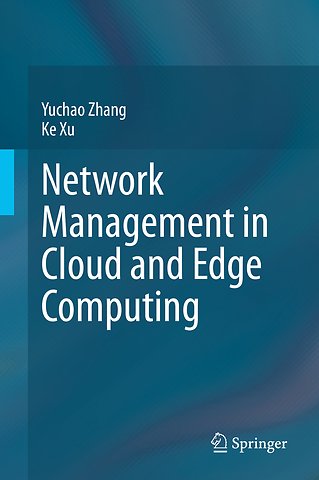Network Management in Cloud and Edge Computing
Gebonden Engels 2020 9789811501371Samenvatting
Traditional cloud computing and the emerging edge computing have greatly promoted the development of Internet applications. But what are the key issues in these two trends and what are the differences between them?
This book systematically introduces several key procedures in both cloud computing and edge computing scenarios, with each chapter providing a detailed description of novel design. In addition, the book also discusses a series of important findings from industry collaborations, which greatly enhance our understanding of the real system of industry. This book is not only a valuable reference resource for researchers, but also provides large-scale deployment cases for real systems in industry.
In order to gain the most benefit from this book, readers should have some the basic knowledge of computer networks.
Specificaties
Lezersrecensies
Inhoudsopgave
<p>1.1 Research background</p>
<p>1.2 Content summary</p>
<p>1.3 Key contributions</p>
<p>1.4 Chapter Arrangement</p>
<p>Section II. A Survey of the Resource Management Throughout Application Processing</p>
<p>2.1 Chapter introduction</p>
<p>2.2 Analysis on request access process </p>
<p>2.3 Transmission Control Protocol</p>
<p>2.4 Communications between processes</p>
<p>2.5 Data Synchronization</p>
<p>2.6 Chapter summary</p>
<p>Section III. A Task Scheduling Scheme in the DC Access Network</p>
<p>3.1 Chapter introduction</p>
<p>3.2 Performance measurement and analysis of network workflow</p>
<p>3.3 Multi-resource allocation model based on delay guarantee</p>
<p>3.4 Experiment and performance analysis</p>
<p>3.5 Chapter summary</p>
<p>Section IV. A Cross-layer Transport Protocol Design in the Terminal Systems of DC</p>
<p>4.1 Chapter introduction</p>
<p>4.2 Design Principles of Dual Perceptual Scheduling Protocol</p>
<p>4.3 Mechanism analysis and design</p>
<p>4.4 Dual-aware scheduling protocol</p>
<p>4.5 System stability verification</p>
<p>4.6 Experiment and performance analysis</p>
<p>4.7 Chapter summary</p>
<p>Section V. Optimization of Container Communication in DC Back-end Servers</p>
<p>5.1 Chapter introduction</p>
<p>5.2 Research Background</p>
<p>5.3 Container group communication mechanism design</p>
<p>5.4 Model sublinear limit</p>
<p>5.5 Experiment and performance analysis</p>
<p>5.6 Chapter summary</p>
<p>Section VI. The Deployment of Large-scale Data Synchronization System for Cross-DC Networks</p>
<p>6.1 Chapter introduction</p>
<p>6.2 Overview of traffic management issues</p>
<p>6.3 Large-scale data transmission system—PieBridge</p>
<p>6.4 System stability proof</p>
<p>6.5 Experiment and performance analysis</p>
<p>6.6 Chapter summary</p>
<p>Section VII. Storage issuses in the edge</p>
<p>7.1 Chapter introduction</p>
<p>7.2 Characteristics in the short video network</p>
<p>7.3 traditional caching policies become invilid</p>
<p>7.4 RL-based strategy</p>
<p>7.5 Experiment and performance analysis</p>
<p>7.6 Chapter summary</p>
<p>Section VIII. Computing issuses in the edge</p>
<p>8.1 Chapter introduction</p>
<p>8.2 Computing scenario in edge computing</p>
<p>8.3 Task mitigation and transfer</p>
<p>8.4 Speed up the edge computing by transformation</p>
<p>8.5 Chapter summary</p>
<p>Section IX. Conclusion</p>
Rubrieken
- advisering
- algemeen management
- coaching en trainen
- communicatie en media
- economie
- financieel management
- inkoop en logistiek
- internet en social media
- it-management / ict
- juridisch
- leiderschap
- marketing
- mens en maatschappij
- non-profit
- ondernemen
- organisatiekunde
- personal finance
- personeelsmanagement
- persoonlijke effectiviteit
- projectmanagement
- psychologie
- reclame en verkoop
- strategisch management
- verandermanagement
- werk en loopbaan
